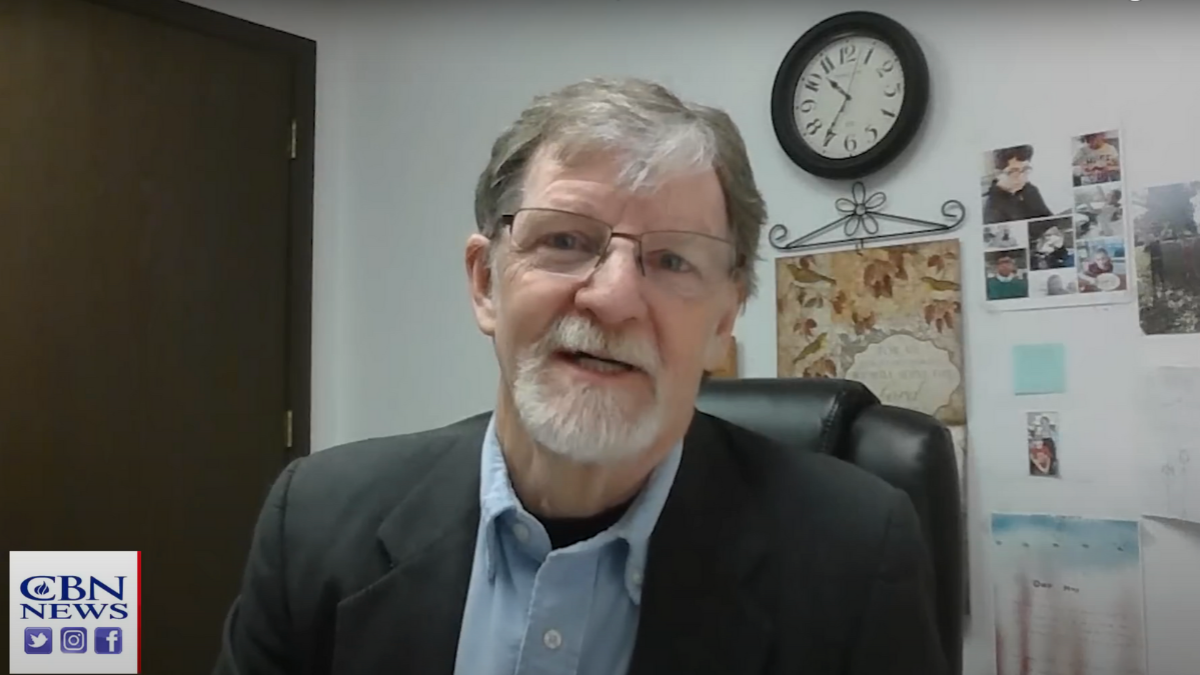
Several issues must be understood about William Paul Young before a person can understand his bestselling book and now feature film, “The Shack.” Primarily thanks to his latest work, “The Lies We Believe About God,” it is now known that Young is a postmodern theologian par excellence.
Very simply, postmodern theology follows this pattern: 1) gather thoughts and experiences from life; 2) review other thoughts and experiences that have been formed into theological constructions in the past (i.e., the Bible); 3) deconstruct these past theologies and retain what resonates with current thoughts and experiences; 4) develop an emerging theology; 5) test it with “the community”; 6) repeat the process.
For postmodern theologians, sacred texts like the Bible are not God’s revelation to man in and of themselves. They are viewed as a collection of thoughts and experiences the ancients had with the divine, from which they promulgated a theology that the community subsequently approved. These texts then are “deconstructed” by the postmodern theologian, who retains the portions that resonate with modern thinking and experiences and forms a theology as “provisional truth.” Later these “truths” will be deconstructed, some ideas retained, and a new theology reborn.
“The Shack” is not a novel nor a movie. It is a theological treatise or, more accurately, a theological manifesto. That manifesto has been approved by a “community” millions strong, if we estimate it by the book sales alone. Further, Young’s experiences emerge from a tragic childhood laced with various forms of religious, physical, and psychological abuse. Many of these abuses came at the hand of his own father. The rest came at the hands of his fundamentalist Christian community.
Young Sees a Real Alienation Among American Christians
It would be a grave error to dismiss out of hand the concerns Young has for Western Christianity. He is reacting to very real issues and the disastrous consequences of religious abuse. Not only does he have firsthand experience with these abuses, but he has a keen awareness of the sloppy and erroneous theologies American Christianity has perpetrated in the twentieth century.
Indeed, perhaps this is the singular attracting factor for his millions of followers. Poll upon poll demonstrates that American Christianity has a steadily growing population of disaffected former adherents. Young simply and cleverly identifies the problems that have contributed to this religious disillusionment. Perhaps this goes a long way toward understanding his popularity.
Once he has the ear of the alienated Christian, Young is in a perfect position to offer his solutions to their common problems based on his experiences. This is exactly what he does in “The Shack.” Again, in this book and movie, the aim is not to entertain by telling an interesting story. The goal is to convince the audience that not only has Young correctly identified definite problems and dangers, but to persuade his audience he has also discovered the solutions.
Note well the postmodern progression of reasoning in his theology. Based on his experiences and thinking, Young takes concepts from the biblical text that resonate with those understandings. He then articulates them in a form his children and wife could easily grasp: a dramatic story. As his “community” they accepted his propositions and encouraged him to spread these ideas to the larger “community,” which evidently has wide approval and acceptance.
Young thus masterfully executes the postmodern theological method. It is convincing, especially in story form. Furthermore, the format makes critique quite difficult.
Look Past the Story to the Ideas It Sells
Take, for instance, that Young describes the person of God the Father as a large, black woman named “Papa.” What is honestly driving this? If a skeptical reader or viewer of Young’s work believes this to be an obvious prima facie error, he misses the real issue here. As one wag put it in a poor and thoughtless critique, “He makes God out to be a fat, black woman! That’s wrong!”
The audience of this work must always keep in mind that Young is writing from his experiences, attempting to drive a theological agenda, and is trying to persuade the audience to adopt said agenda. So why portray God the Father this way? Could it be that because Young was abused by his own father, he wishes to portray God the Father primarily as feminine? Furthermore, might his experiences with fundamentalist Christian sects have proven over and again to him that to portray God as male would be to say that God is domineering and abusive?
To be sure, Christians would generally agree that imagining God as tyrannical and violent, comparable to an abusive father, is patently incorrect. However, one must be careful in determining whether Young’s solution to this error is the necessary corrective. To understand God as a loving Father, Young jettisons the entire notion of a male being loving in his “maleness.” Put simply, Young is saying one must become more feminine if he hopes to ever offer genuine love and care for his children.
To solve the problem of factions of American Christianity incorrectly representing God as an overtly disciplinarian male father figure, Young suggests that if his audience thinks of God the Father first of all as a regular human being, secondly as a woman, tertiarily as a minority, and finally as one who suffers from obesity, it can extinguish the dangers of viewing God as a demanding father figure.
Once this is understood, viewers can make a suitable critique of Young’s solutions to a very real problem. They then appropriately ask, “Is the solution to fundamentalist notions of God to emasculate him, or is there a better solution to the problem?”
A Helpful Frame for Evaluating ‘The Shack’
This is just one example of the legion of difficulties Young offers as solutions to extant problems in Western Christianity. As you read or watch “The Shack,” ask yourself, “What is the problem Young is trying to address here? Is the problem real or imagined? Is his solution to the problem correct or will it result in further difficulty?”
Another less-obvious example of this in “The Shack” is a proposition Young puts forth clearly in “The Lies We Believe About God.” He calls it a “lie” that sin separates human beings from God. Here again, the author is drawing on his experiences and reason to articulate a real problem and formulate a solution.
Sadly, fundamentalists typically meet moral failings of any kind with little more than shaming and rejecting the person who has failed. Even if some respond with real repentance, these communities have a reputation for shunning anyone who does not live up to their expectations. Even more tragic is the fact that these sects invent, as matters of morality, certain dress codes and hair styles adherents must maintain to avoid being “separated from God by their sins.” For them, sin is little more than religious taboo.
Young readily recognizes this problem. His solution is to proclaim that sin does not separate humanity from God. Man separates himself from God by his thinking. It is man’s thinking that separates him from God, not some imagined offense.
This is portrayed in the book and film as Sarayu and Mack tend the garden near the shack. The “garden” represents Mack’s mind, and it needs to be weeded of the thinking that sin somehow separates Mack from God. The imagery here is intended to teach the audience that the work of the Holy Spirit is to “renew our minds” (Rom. 12:1) from this purportedly false belief. Young identifies a real problem and gives us a solution. However, it must again be asked, “Is this the correct solution?”
Hopefully this short guide to reading and watching “The Shack” will be helpful in detecting and evaluating the theology Paul Young is preaching. Moreover, it is helpful for thinking through any theological proposal and evaluating its truth.









